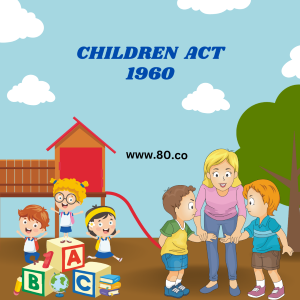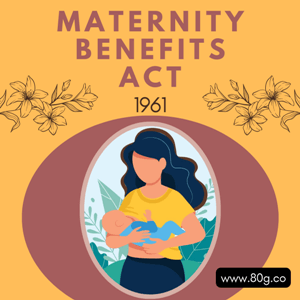NGOs provide a broad range of services globally that are geared toward promoting social welfare and human well-being. These groups are dedicated to helping the community grow and change for the better. All NGOs should be aware of the fact that India is a well-managed country with many laws like the children act, the advocate act, the consumer protection act, the maternity edges act etc. These are helpful to you in case you are facing any issues regarding children’s rights, advocate rights, consumer rights and maternity rights. This blog will look at these acts and explain how an NGO can avail the advantages of these acts for its organization.
Advocates Act,1961
 The Advocate Act, 1961 is an Act of the Parliament of India which regulates the legal profession in India and provides for the registration of advocates. The Act came into force on 19 May 1962. It provides for the registration of advocates and their enrolment on the state roll of advocates. To become an advocate, one must be enrolled on the state roll of advocates. For this, a person must be an Indian citizen and pass the Bar Council of India administered Common Entrance Test, as well as obtain a degree in law from a recognized university. The Bar Council of India is the regulatory body for legal education in India and also regulates the degree in law programmers offered and awards the degree of Bachelor of Laws. The Advocate Act, 1961 was formed to handle the legal profession in India.
The Advocate Act, 1961 is an Act of the Parliament of India which regulates the legal profession in India and provides for the registration of advocates. The Act came into force on 19 May 1962. It provides for the registration of advocates and their enrolment on the state roll of advocates. To become an advocate, one must be enrolled on the state roll of advocates. For this, a person must be an Indian citizen and pass the Bar Council of India administered Common Entrance Test, as well as obtain a degree in law from a recognized university. The Bar Council of India is the regulatory body for legal education in India and also regulates the degree in law programmers offered and awards the degree of Bachelor of Laws. The Advocate Act, 1961 was formed to handle the legal profession in India.
Get knowledge about more acts like section 80g of the income tax act.
Children Act,1960
 The Children Act of 1960 was passed in order to protect the rights and welfare of children and young people. In this article, we will explore what it specifically entails and how it has helped shape our current laws regarding minors.
The Children Act of 1960 was passed in order to protect the rights and welfare of children and young people. In this article, we will explore what it specifically entails and how it has helped shape our current laws regarding minors.
What is the Children Act 1960?
It is a law that protects the rights and welfare of those under 18 years old from negligence, abuse or exploitation by adults. This applies whether they are at home or away from their parent’s custody and extends across all aspects of life, including education, health care, employment opportunities etc.
Donate to the NGOs who are working for the protection of this act and get deductions on your donation under 80g.
How does the Children act apply?
The legislation sets out various duties for local authorities to meet when determining what should be done with regard to any particular child’s welfare needs. They must assess each case on its individual merits while taking into account factors such as age, family situation, capabilities/skills possible risk posed if no intervention takes place etc. Additionally, if an action taken could potentially breach one person’s interests over another then there must be due consideration before proceeding further (e g parental and maternal wishes).
What changes has it brought about?
As a result of this legislation significant changes have been brought about concerning Education – increasing levels available both academically plus vocational courses; Health Care – allowing access for younger patients without going through adult channels which may previously not have been considered appropriate according to legal definitions; Employment Opportunities – providing job prospects where never before seen fit since minimum working ages annually lowered once again thanks largely because finding ways around loopholes prevented within veritable mountains paperwork!
CONSUMER PROTECTION ACT, 1986
 The Consumer Protection Act often referred to as CPA, is one of the most important pieces of consumer protection legislation in India. In this article, we will provide an overview of what it is and how it works.
The Consumer Protection Act often referred to as CPA, is one of the most important pieces of consumer protection legislation in India. In this article, we will provide an overview of what it is and how it works.
You can get to know much more about ngo registration.
What is the Consumer Protection Act?
The Consumer Protection Act 1986 was introduced by Parliament altogether to safeguard purchasers from out-of-line or unreasonable exchange rehearses. It frames the freedoms of customers who are offered labor and products that don’t measure up to the assumptions or necessities set out in the demonstration. These freedoms include:
Security – Providers should guarantee that all items they sell on retail advertisements satisfy the essential well-being guidelines.
Data – Giving clients solid data about items before going with a buy choice.
Picking – Giving clients more choices while picking an item/administration and permitting them to suitably look at costs.
Goal – Laying out systems for clients to rapidly determine any grumblings connecting with blamed things bought and, where essential, giving money-related reliefs.
How does the CPA work?
This important legislation lays down various processes that manufacturers and service providers must strictly adhere to while interacting with their respective buyers/customers. One such process relates to complain management: A customer needs simply lodge his grievance via written notice at district forum offices established across every Indian state, wherein the concerned organization need to appear during hearing dates conveyed within 30 days starting from point of receipt.
MATERNITY BENEFITS ACT,1961
 The Maternity Benefits Act, 1961 provides for paid maternity leave for women workers. The Act covers women workers in factories, shops, establishments and hospitals. The Act applies to the organized sector of the economy. The benefit under the Act is payable for a maximum period of 12 weeks in connection with normal delivery or 14 weeks in case of caesarian operation.
The Maternity Benefits Act, 1961 provides for paid maternity leave for women workers. The Act covers women workers in factories, shops, establishments and hospitals. The Act applies to the organized sector of the economy. The benefit under the Act is payable for a maximum period of 12 weeks in connection with normal delivery or 14 weeks in case of caesarian operation.
Many NGOs are working for the protection of this act and one can get 80g deduction on his/her donation under section 80g.
The Maternity Profit Act 1961 is a federal law that provides for the payment of maternity benefits to eligible female employees. The act covers all female employees who are employed in an establishment to which the act applies. The act is administered by the Department of Employment and Social Development.
The Maternity Profit Act 1961 provides for the payment of maternity benefits to eligible female employees. The maternity benefit is paid for a period of around fifteen weeks and is calculated based on the employee’s average weekly insurable earnings.
To be eligible for the maternity benefit, the employee must have been employed for a continuous period of at least twelve weeks and must have stopped working because of the pregnancy. The benefit is paid for a period of fifteen weeks and is calculated based on the employee’s average weekly insurable earnings.
For other information regarding section 80g of income tax act, you can visit our web URL.

[…] One can get tax deductions under an act that is section 80g of income tax act. […]
[…] NGOs who are fighting against female foeticide can provide tax exemptions to their donors under section 80g. […]